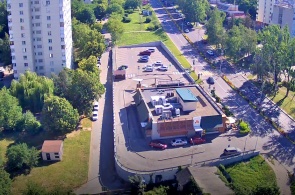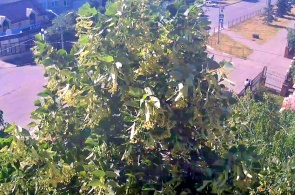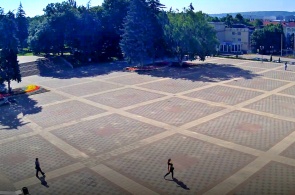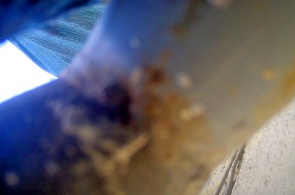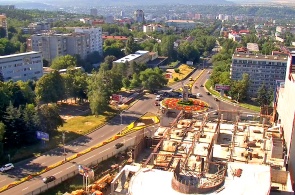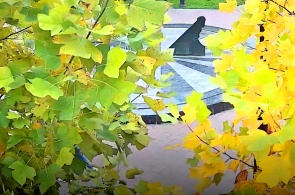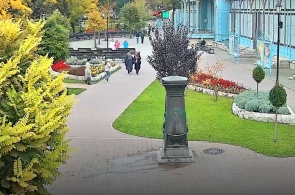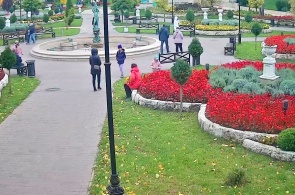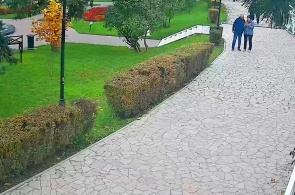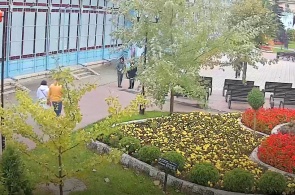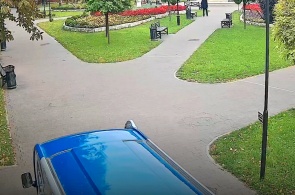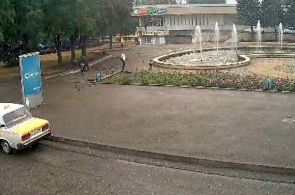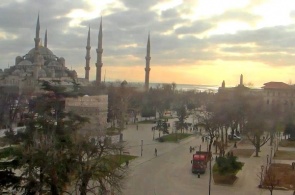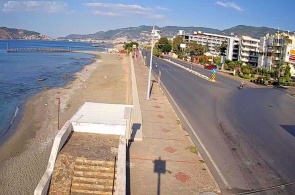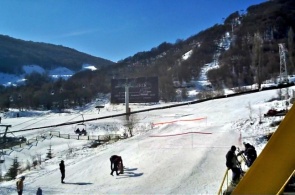One of the most beautiful and oldest resortsRussiaisPyatigorsk. Here are many health clinics specializing in the treatment and prevention of diseases by application of medicinal mud and mineral waters. The name of the city is located in the the heights – Mashuk, Dubrovka, Hot, Cossack, Post and Picket. The highest mountain – Beshtau is situated not far from Pyatigorsk. It offers an excellent overview of the city and the chain of the Caucasus mountains. Modern Pyatigorsk is a Museum under the open sky, stretching is not the left Bank of the Podkumok river, and is divided into two parts, one of which focused Spa and treatment centres and institutions, and in other residential areas and businesses of the urban infrastructure. Beautiful nature of the Caucasus mountains, with a mild climate, perfect for rest and recreation and for the acquisition of new unforgettable impressions. A lovely walk in the fresh air, surrounded by picturesque forests, you can spend on mount Mashuk. Interesting place is the grotto with a small lake, called a flop. A unique monument of landscape art is the Elizabethan flower garden, with the Academic gallery, beautiful cascading staircase, grottoes, sculptures, viewing platforms and gardens, lush vegetation. Here is the oldest sanatorium institutions of Pyatigorsk - Pushkin, Ermolov and Pirogov baths. Which is also beautiful monuments. Among other architectural and monumental attractions, it should be noted the Bristol hotel fountain "Dwarves" and the statue of the eagle established as the hallmark of the city. It should also be mentioned that Pyatigorsk is inextricably linked with the great Russian writer Mikhail Lermontov, who spent here his childhood, the years of his exile and last days before her tragic death in a duel. The city's museums and parks are named in honor of the writer, an old health resort – Lermontov bath, and various memorials. Special attention deserves the colorful Orthodox Church in the name of Lazarus the four. The Church is located near the sanatorium "Lenin rocks" and the mineral water pump room No. 19. The Church building was built in 1856, however, due to the unreliability of the soil under the Foundation was built almost from scratch in 1902. It is generously decorated with a figured stone walls, half columns, and arches. The temple is divided into 5 parts with columns supporting an octagonal drum crowned with a graceful cupola. Despite persecution of religious institutions after the Revolution, the Church was able to work through the entire Soviet era. Nowadays, Lazarevskaya Church is also a representation of the Beshtaugorsky Holy assumption monastery.
More details
Pyatigorsk webcam with a view of the CCGT building and adjacent territories. Near this place passes the roadway, towering apartment buildings. This was once a McDonald's. Now there is a fast food cafe "Vkusno i Tochka". The broadcast is transmitted in real time.
Pyatigorsk, Russia
21.08.23
The Pyatigorsk webcam is located in the village of Inozemtsevo and broadcasts a view of Shosseynaya Street. Near this place there are rocks and mountain peaks, a large green massif. Nearby is the railway station Inozemtsevo. The broadcast is transmitted in real time.
Pyatigorsk, Russia
14.08.23
Pyatigorsk webcam overlooking Lenin Square. The review covers a well-maintained paved area surrounded by trees and houses. Near this place is the Gorky library, a well-groomed square with monuments, and the city administration. The broadcast is transmitted in real time.
Pyatigorsk, Russia
11.08.23
Pyatigorsk webcam overlooking Kirov Avenue. Thanks to the broadcast in real time, you can watch what is happening from anywhere in the country and the world where there is an Internet connection.
Pyatigorsk, Russia
05.08.23
PTZ webcam at the intersection of Kalinin and 1st Boulevard, where there is a well-maintained roundabout with beautiful flower beds and a stele. Behind you can see a picturesque city panorama. The broadcast is transmitted in real time.
Pyatigorsk, Russia
02.08.23
The Pyatigorsk webcam is broadcasting from the City Park Flower Garden. The lens of the device hits a sundial breaking through the branches of trees - one of the compositional decorations of the landscaped territory of this magnificent recreation. The broadcast is in real time.
Pyatigorsk, Russia
10.12.22
Camera with a view of the mineral water source in Tsvetnik Park (Pyatigorsk). The city has long been known for its healing springs and balneological resorts. One of them adorns the landscaped alley of the beloved city park. The broadcast is transmitted online.
Pyatigorsk, Russia
09.12.22
Webcam overlooking a lush flower bed in the Tsvetnik Park (Pyatigorsk). The lens captures a beautiful alley leading to the fountain, as well as landscaped areas surrounding it. Real-time broadcasting allows you to take a pleasant online walk, even if you do not have the opportunity to visit these places in person.
Pyatigorsk, Russia
08.12.22
The webcam broadcasts a view of one of the alleys of the Tsvetnik Park in Pyatigorsk. In real time, you can watch the walking residents and guests of the city, as well as the charming nature, the carefully landscaped territory of this wonderful place.
Pyatigorsk, Russia
07.12.22
Pyatigorsk webcam overlooking the territory of the Flower Garden Park near the Lermontov Gallery. A well-groomed territory, a well-maintained recreation gets into the lens. Thanks to real-time broadcasting, everyone can take a pleasant virtual walk through beautiful places.
Pyatigorsk, Russia
06.12.22
The webcam is located on the territory of the Flower Garden Park in Pyatigorsk. The device broadcasts the alley near the monument to Kise Vorobyaninov. Thanks to real-time transmission, as well as high-quality video, everyone can admire the well-groomed territory and beautiful nature from anywhere in the country and the world.
Pyatigorsk, Russia
05.12.22
Translation is carried out with the Boulevard street in Pyatigorsk. This is the first street built in the district of White Daisy that began to settle in the 60-ies of XX century. In the early years the street was called Travel, and a little later they. Patrice Lumumba. The current name of this site was in 1994.
Pyatigorsk, Russia
13.09.15
This webcam displays a view of Lermontov's Market located on St. 295 Shooting Divisions in Pyatigorsk. In this area there are various shopping centres, restaurants, cafes and kebab houses, car parks, shops and train station Lermontovskiy.
Pyatigorsk, Russia
13.09.15
The view from the webcam opens in the Komsomol Park of Pyatigorsk, located between the street Ordzhonikidze and street-city of Panagyurishte. The Park was founded in the second half of the twentieth century, the square near the monument "the First Komsomol members of Pyatigorsk." Gradually, the Park has acquired numerous alleys and monuments. The construction of the Park was engaged in a government Department, and take care of the seedlings was helping Piatigorsky students.
Pyatigorsk, Russia
13.09.15
Webcam shows a view of the fountain, located at the shopping center Horseshoe in the center of the White Daisy in Pyatigorsk. It was opened in 1974 and pleasing to the eye for over 30 years. After a short period of neglect, the fountain was renovated for the 230-year anniversary of Pyatigorsk. It is equipped with beautiful colored highlights and new hydraulic mechanisms, and updated the pool itself.
Pyatigorsk, Russia
13.09.15
popular camerasshow all
Stavanger, a town in the commune of Norway, located in the South-Western part of the country, on the Peninsula, rich in minerals. Tanager combines the influence of foreign organisations such as NATO and oil companies. The camera will shoot the harbour and the promenade of the city.
Stavanger, Norway
Sultanahmet or Blue mosque is a work of art of Turkish-Islamic architecture. Its construction began in 1609, the construction work took seven years to a 19-year-old Sultan. The name of the mosque was, due to its interesting and unique finish.
Istanbul, Turkey
A webcam broadcasts the district of Tosmur - quiet location in the Eastern part of Alanya, located only five kilometres from the city centre. Its rural way of life and the beauty of untouched nature attract tourists.
Alanya, Turkey
Shark Island or in English of Shark island, located in the harbour city of Sydney, the suburb of Point Piper. The locals, the natives named the island Boambilly, which translated means Shark island. After all, this name is not casual, because it's mean and looks like a shark fin.
Sydney, Australia
The webcam is installed on site Alva. Tsaghkadzor ski resort town in Armenia. Tsaghkadzor is a beautiful mountainous area among deciduous forests, with a pleasant winter climate, and clean fresh air. The highest point is 1800 meters. The truss type is a classic, divided into three.
Tsakhkadzor, Armenia

